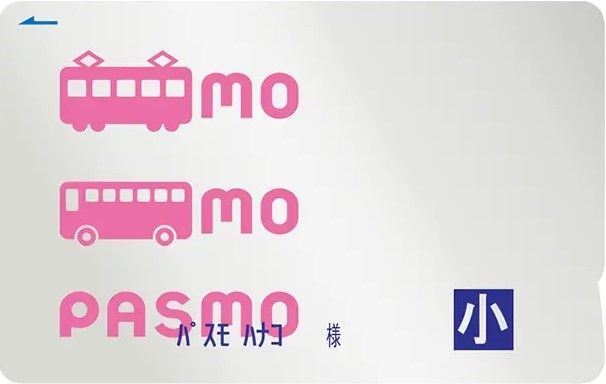IC cards are versatile tools used for making payments in various places like public transport, restaurants, shops, and vending machines. While countries like Singapore and Hong Kong typically have only one or two types of IC cards in use, Japan presents a different scenario.
In Japan, the abundance of IC cards reflects the country's unique approach. Each transportation service provider issues its own IC card, leading to a wide variety in circulation. This diversity is understandable given the country's extensive public transport network.
Remarkably, since 2013, Japan has made significant strides in unifying these cards. Ten IC cards have been integrated to allow seamless use across different regions in Japan. This integration is a boon for travelers, simplifying their experience.
In this article, I'll explore the ten most popular IC cards in Japan. These cards are essential for anyone traveling to Japan, ensuring a hassle-free journey without the need to purchase multiple cards when moving between regions.

Suica is a convenient IC card issued by JR East (East Japan Railway Company), serving the Tokyo, Niigata, and Sendai regions. For travelers arriving at Tokyo's Narita or Haneda airports, purchasing a Suica card is a common option.
In addition, there's a special version of the card, the Welcome Suica, designed specifically for foreign visitors. This version distinguishes itself from the standard Suica by not requiring a deposit and being valid for a limited period of 28 days.

Pasmo, similar to Suica, is another IC card available in Tokyo. It's issued by various train, subway, and non-JR bus operators within the Greater Tokyo, Niigata, and Sendai areas.
Targeting international visitors, Pasmo offers the Pasmo Passport, a variant of its standard card. Unique features of the Pasmo Passport include exemption from deposit requirements, a one-month validity period, and being non-refundable.

Icoca ranks among the top choices for IC cards in Japan, particularly for those visiting the Kansai region, including cities like Osaka and Kyoto, as well as the Chugoku and Hokuriku areas. This card is provided by JR West company.
Tourists arriving at Kansai Osaka Airport often opt for the Icoca card. In a move to cater to international visitors, the company has introduced the Kansai One Pass. This special edition not only facilitates travel but also offers discounts at various tourist attractions in the Kansai region.

Operating in the same regions as Icoca, including Kyoto, Osaka, Nara, Kobe, and Himeji, PiTaPa is another widely-used IC card. Its name stands for "Postpay IC for Touch and Pay," indicating its unique payment system.
PiTaPa operates on a postpaid basis, meaning users pay the card bill after usage. This feature makes it distinct from other IC cards. However, due to the requirement of linking to a bank account, PiTaPa is seldom used by foreign tourists.

Toica is an IC card provided by JR Central, primarily for use in the Greater Nagoya and Shizuoka areas. The name Toica is an acronym for "Tōkai IC Card." It is recognizable by its charming mascot, a yellow chick, which adds a playful touch to the card's design.

In the Nagoya region, Manaca serves as another popular IC card option. It is distributed by the Nagoya City Transportation Bureau, which manages a network of trains, subways, and non-JR buses throughout the area.

Travelers arriving at New Chitose Airport in Hokkaido are likely to choose the Kitaca card. This card, issued by JR Hokkaido, is widely used across Hokkaido Island, including in the city of Sapporo.
Kitaca is notable for featuring an adorable mascot, the Ezo momonga, a type of flying squirrel indigenous to Hokkaido. This unique mascot adds a local touch to the card, making it a memorable part of the travel experience in Hokkaido.

In the southern part of Japan, Sugoca emerges as a prominent IC card, issued by JR Kyushu. This company operates extensively in the Kyushu region, covering major cities like Fukuoka, Kumamoto, Kagoshima, Oita, and Nagasaki.

Additionally, in the Kyushu region, Nimoca is another notable IC card. It differs from Sugoca in its issuer; Nishitetsu company provides this card operating trains and buses not only in Fukuoka City but also in other areas across Kyushu and Hakodate.

Focusing on Fukuoka City in the Kyushu area, Hayakaken is the IC card of choice, especially known for its cute prairie dog mascot. Specifically designed for the subway system in Fukuoka, Hayakaken facilitates convenient urban travel.
These IC cards represent the most popular and widely used options in Japan, offering a seamless experience as they are integrated for use beyond their respective operational areas.
For example, a Suica card can be used in the Icoca operational areas of Kyoto and Osaka, and vice versa.
This integration extends to topping up the cards as well. You can reload the balance of any card at machines designated for various cards. For instance, it's possible to top up a Suica card at machines meant for Icoca, Pasmo, PiTaPa, and others.

When using these cards, it's crucial to look for the IC card logo at transaction points. This logo indicates whether an establishment accepts payments with IC cards to have a hassle-free payment experience.

